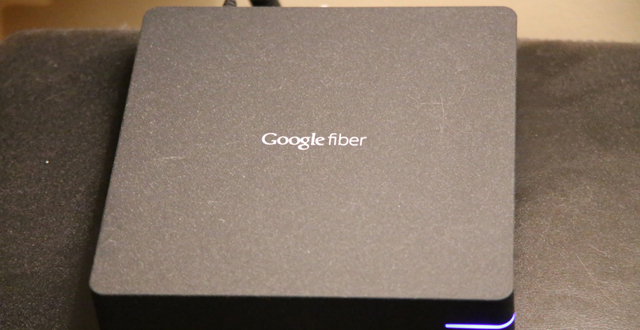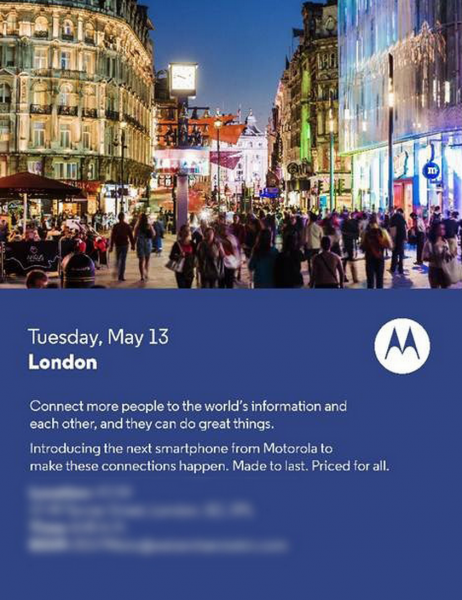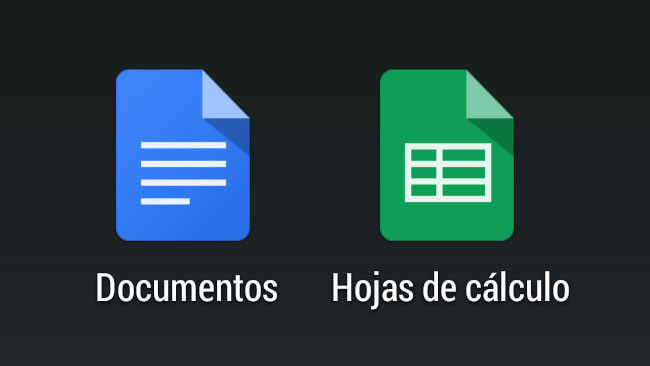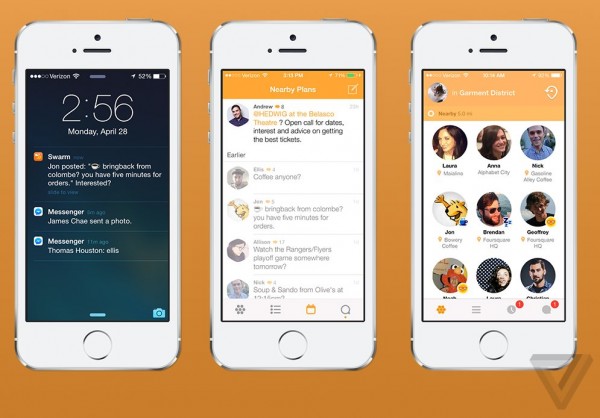Technological observatory from April 28th to 4th May
This week in the Indra Technology Observatory:
- A vulnerability puts users of all Internet Explorer versions at risk
- Google has plans to add a WiFi connection to its fiber-optic service Fiber
- Skype makes group video calling free
- Google to replace the Nexus range with the new Android Silver
- Motorola to unveil its new smartphone on May 13
- Google rolls out its Docs and Sheets apps, with Slides soon to follow
- FourSquare revamp, minus the check-in feature
Microsoft issued a warning last weekend about a new vulnerability discovered in Internet Explorer. It affects all versions of the web browser, from 6 through 11, but the last three are specifically targeted. The flaw is quite serious and could affect as many as 25% of all Internet users. Discovered by the security firm FireEye, the vulnerability lets hackers gain full user rights and control of the target computer, allowing them to access data and install and remove programs. All it takes is for the user to visit a malicious website. According to FireEye, the flaw can also be activated via a Flash file. Microsoft is working on a fix and in the meantime has issued a few tips to protect users. The vulnerability can be mitigated by downloading the Enhanced Mitigation Experience Toolkit (EMET) and running Internet Explore in Enhanced Protected Mode. FireEye also recommends disabling Flash for the moment. Although the latest versions appear to have been specifically singled out, users of earlier versions of Internet Explorer could be facing even more problems. For those still with Windows XP, whose support was withdrawn on April 8, the chances of remaining vulnerable, even with a patch from Microsoft, are even higher. One more reason to upgrade your operating system!

Google is forging ahead with the vertical integration of Internet services. After launching its own fiber-optic network in the United States, Google Fiber, the company now looks set to expand its services to WiFi and cell phones. Google Fiber is already available in Kansas City (Missouri) and Provo (Utah), and now the company is gearing up to include cities like Phoenix (Arizona), San José (California) and San Antonio (Texas) in 2015. As reported in Computer World, the Internet giant has circulated a document to the 34 cities that are in line to receive Google Fiber in 2015, saying it "will be discussing our WiFi plans and related requirements with your city as we move forward with your city during this planning process". Google has confirmed its WiFi aspirations, although it hasn't corroborated the existence of a specific roadmap. A spokeswoman for the company said, "We'd love to be able to bring WiFi access to all of our Fiber cities, but we don't have any specific plans to announce right now." In the circular, Google asked the candidate cities for detailed information, and they have until May 1 to reply. Google Fiber started out as a trial in 2011, but new cities soon joined the project and it still is expanding its horizons. To date, the Google Fiber range of services includes a free "basic Internet" option, a connection speed of one gigabit per second for $70 (€50) per month, and a TV package with more than 200 channels for a monthly fee of $120 (€86). The set-up costs range from $0 and $300 (approximately €216). If the company does extend its services to WiFI, the ultra-fast Google Fiber connection would cover whole neighborhoods, as all the local residents would be able to use their smartphone to hook up to the network and enjoy activities that require broadband, like video streaming. Google has had its eyes on the cell phone market for some time. Besides, the expansion of Google Fiber will allow to the company to gain a foothold in different stages of the U.S. Internet value chain, from online services like searches and advertising to the infrastructure necessary to access them.

Microsoft seems to have heeded the lesson of rival services. Skype is finally to include one of the functionalities most demanded by users: free group video calling. Previously reserved for premium users, it was incorporated by platforms like Google Hangouts (and others) ages ago. The upgrade was announced in the Skype blog and is already available for Windows, OS X, Windows Phone, Android and iOS. So from now on you can use the famous app to make free calls to several contacts at once, rather than having to use other alternatives.
It looks like the Silver project is starting to gather momentum. According to an article in The Information and reports in other sources, Google is planning to replace its Nexus range for premium smartphones from different manufacturers, with special support, no bloatwares and upgrades as soon possible to the latest Android versions. Known as the Silver project, the strategy seems to be about replacing the range to support and perhaps subsidize the different competitors in the Android market. Google will also allegedly team up with different operators and manufacturers to persuade them to promote sales of these new Google Play edition devices. This is a new departure for Google as up to now it has always preferred to use Google Play as its marketing channel, so it's hard to see how this fits in with its intention of selling these terminals with the Silver guarantee label. Or perhaps they will follow Apple's example and sell an unlocked version from Google Play and an on-contract version through operators. The venture is likely to require vast resources from Google, though it will have the initial support of Motorola and LG, two brands that have recently worked elbow to elbow with Google and seem prepared to repeat the experience. Samsung, Sony, HTC and the other companies will probably take a few months longer to come on board, although they are manufacturers who already sell their terminals in Google Play edition and are therefore likely to adopt this Silver edition as well.

Motorola is gearing up for a new product launch. The date and place chosen are May 13 in London. As stated on the invitation, the company has created an event to present the next smartphone from Motorola to make connections happen. “Made to last. Priced for all.” It's clearly a low-end, hard-wearing smartphone that will attempt to repeat the success of the Moto G. In the last few weeks there have been rumors about the so-called Moto E, allegedly another smartphone with a 4.3-inch display, 1GB of RAM, 4GB of internal memory and possibly a Snapdragon 200 processor. A retail price of €50 is rumored, but we won't know any more until the May 13 launch. Motorola never chooses Europe to unveil its high-end terminals, so if we were placing bets our money would be on this Moto E having the wraps taken off, not the Moto X+1. Of course, it could be different this time, but that "Priced for all" tag does suggest that it's the terminal whose logo we've already seen. STOP PRESS: A similar event is also going to be held in India. A simultaneous press conference? Could more places be lined up?

Google has just launched two new office apps for Android devices to create documents and spreadsheets. The first one is called Google Docs and the second one Google Sheets, Documentos de Google and Hojas de cálculo de Google in Spanish. As their names suggest, the two new apps will let you view, create and edit your Google documents and spreadsheets in the same way as from Google Drive, but now each with their own app. The advantage of Google Docs and Google Sheets is that you'll be able to work with your documents without an Internet connection and, as with Google Drive, several people will be able to edit and add comments to documents at the same time. Both apps are free and they are soon to be joined by Google Slides, which will let you view, create and edit presentations from your Android device. The new office suite only recognizes Google files.
Major changes are afoot with a classic check-in app. FourSquare has decided to revamp the app that has underpinned all of its business in recent years: in the new version you no longer need to check in to let your contacts know your location. The Verge has just published a story based on a statement from FourSquare CEO Dennis Crowley regarding the changes they have decided to introduce to adapt to an era in which having to check in to let users know your whereabouts has become a thing of the past. Now, a user who visits five Japanese restaurants over the course of a month doesn't need to check in for FourSquare to tell you that he's a fan of that cuisine. WiFi signals and enabled GPS will create "heat zones" of the areas most visited by people. The 5 billion check-ins stored in the FourSquare database (compiled over several years of activity) are more than enough to indicate the places of interest in a given area and offer recommendations, which after all is the cornerstone of the company's business model. To adapt to this new reality, they have created a new app called Swarm (swarmapp.com, available in the weeks to come but with an email link already up and running for interested users), which will exist alongside the current FourSquare app. Swarm will be a “social heat map”, helping users find friends nearby and check in to share their location. With rollout due within a month or so, the new FourSquare app will assign the check-in feature to Swarm and focus exclusively on the exploration and discovery of places.

On the decision to ditch the FourSquare check-in, Bijan Sabet, one of the first investors in the project and current board member, said, “Having a check-in button as the main interface every time users opened the app created a noticeable hurdle for engagement. Imagine if you opened up YouTube and the first thing it asked you to do was create a video. That would scare off a lot of people.” Will the new FourSquare survive as a recommendation engine without the check-in button? Will the new Swarm be able to continue supplying information about popular places in cities? Is this a good move or a digital suicide? Watch this space...
